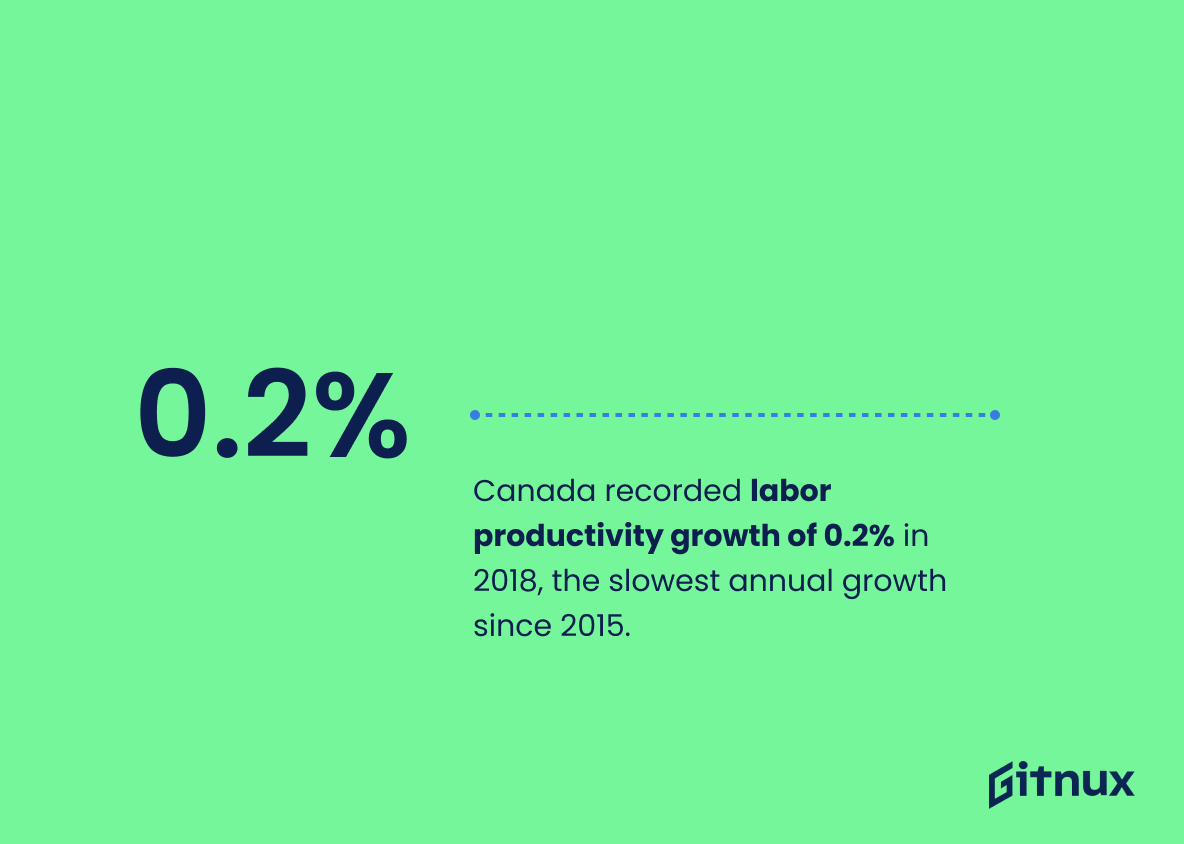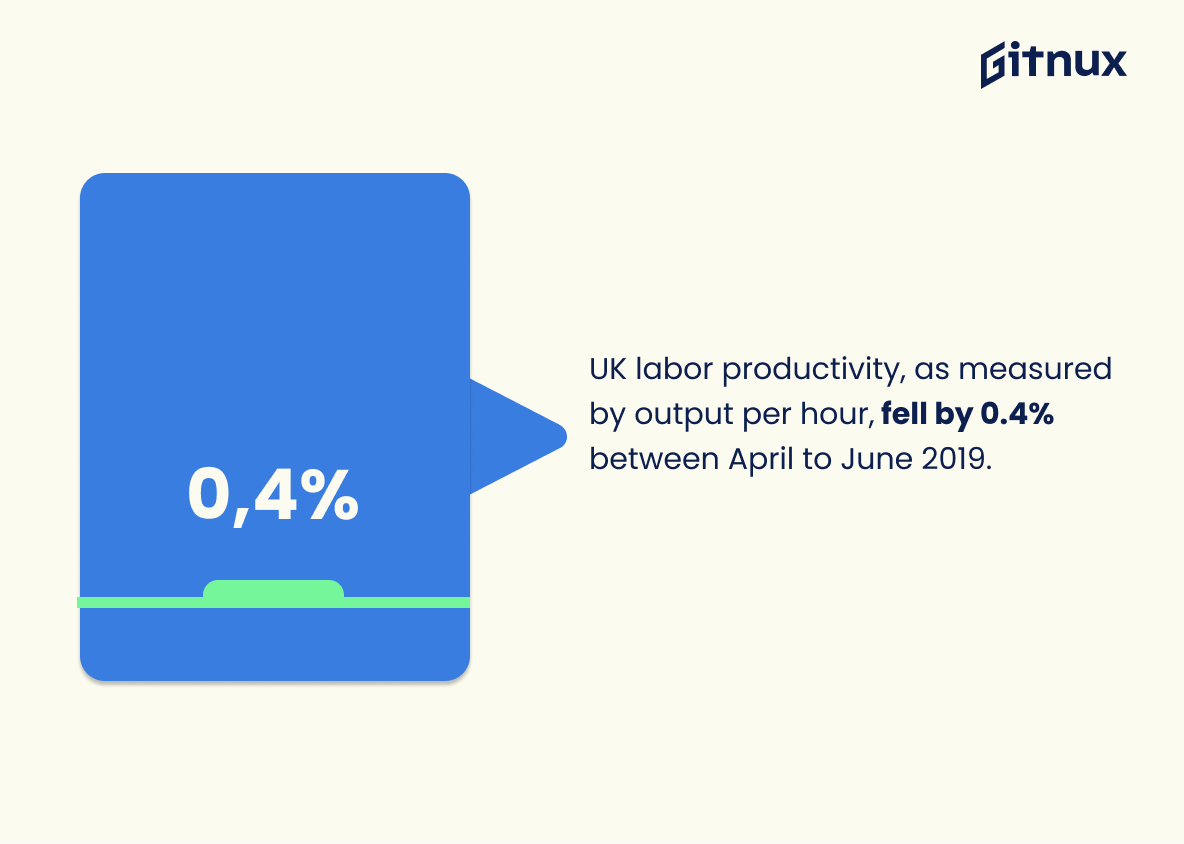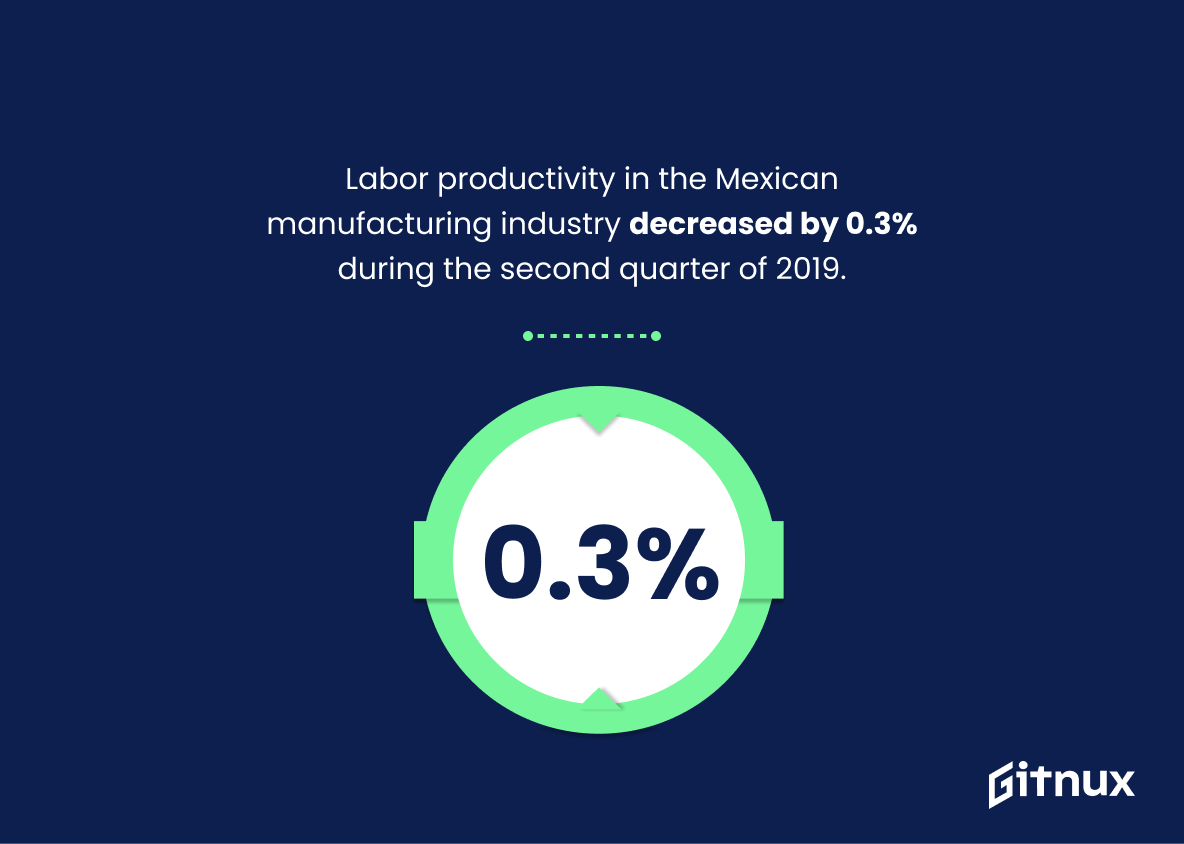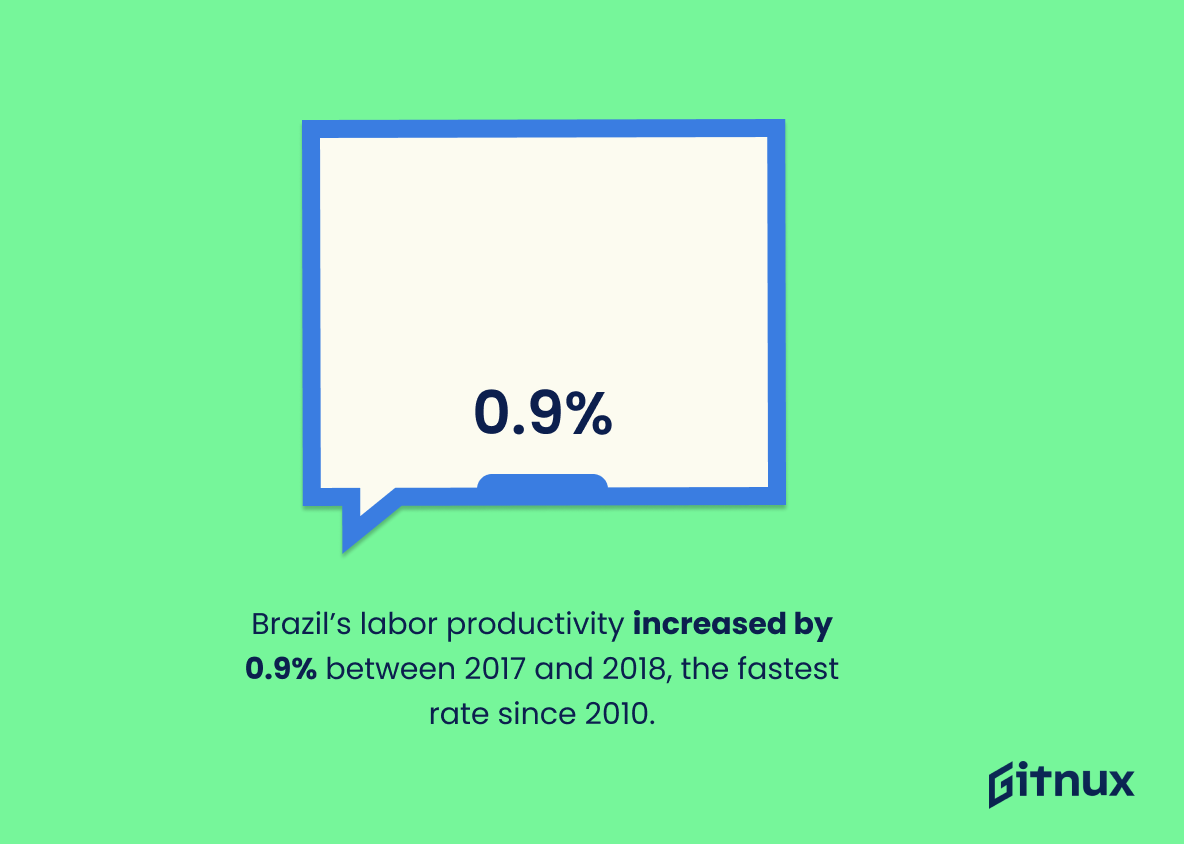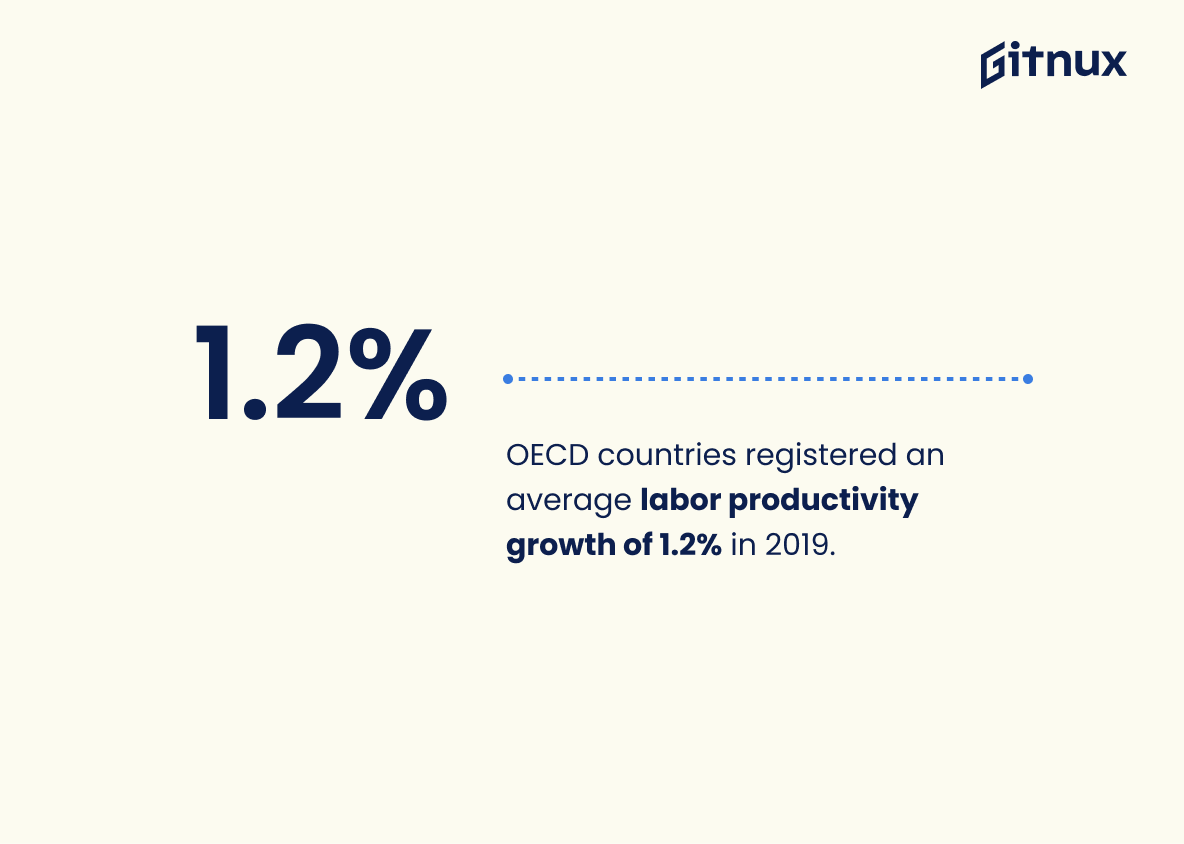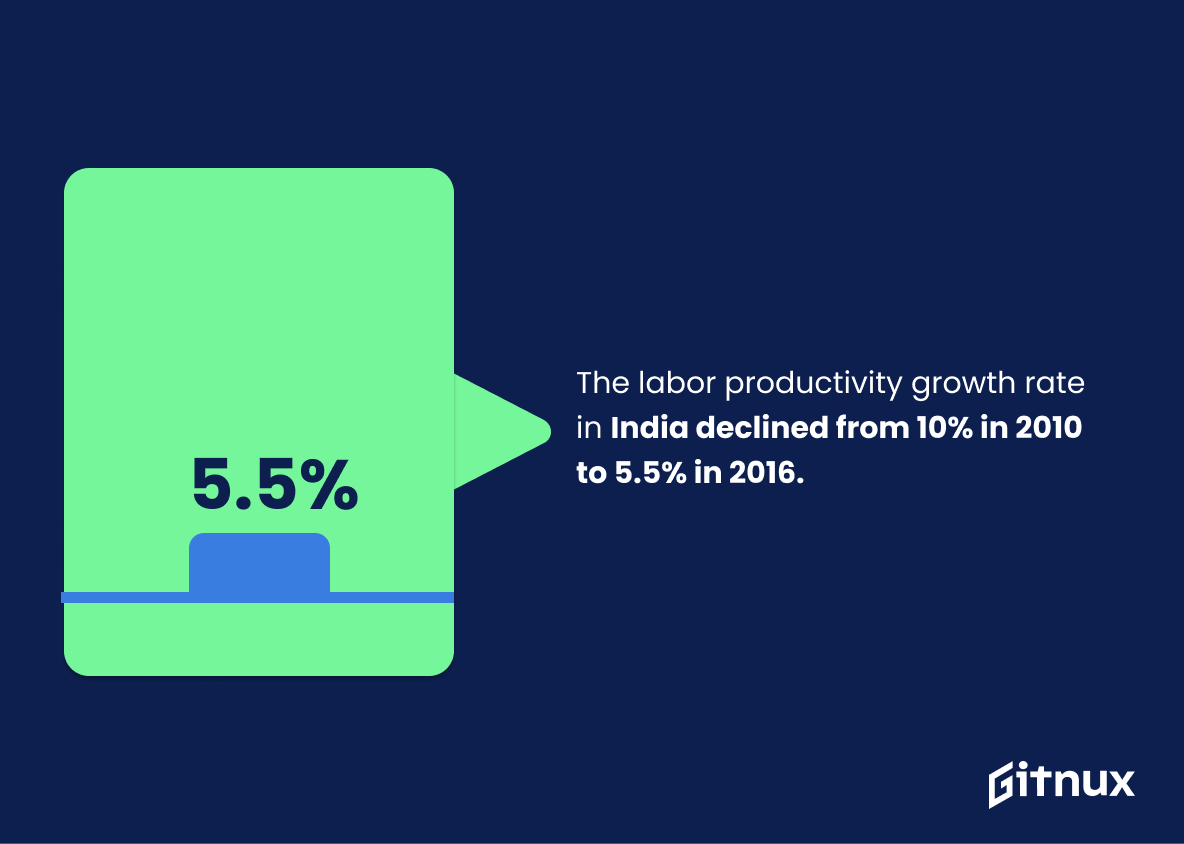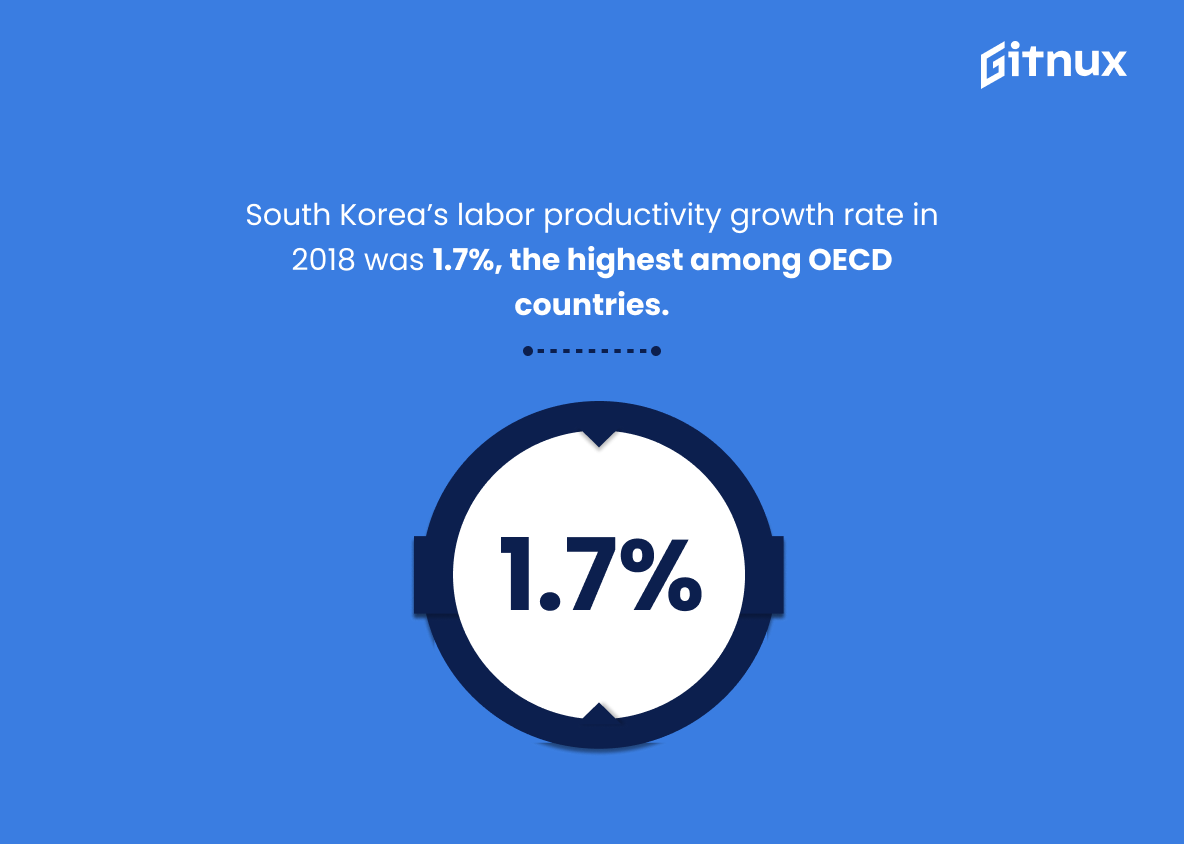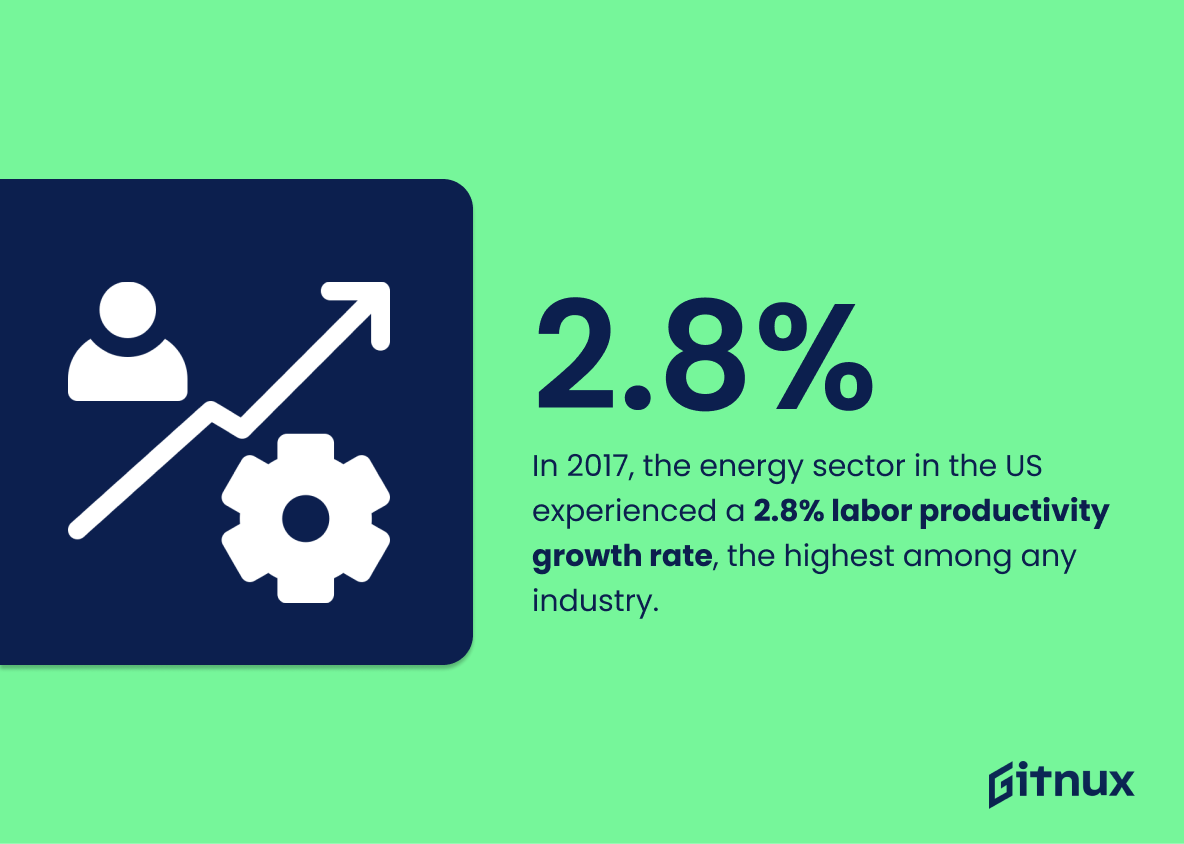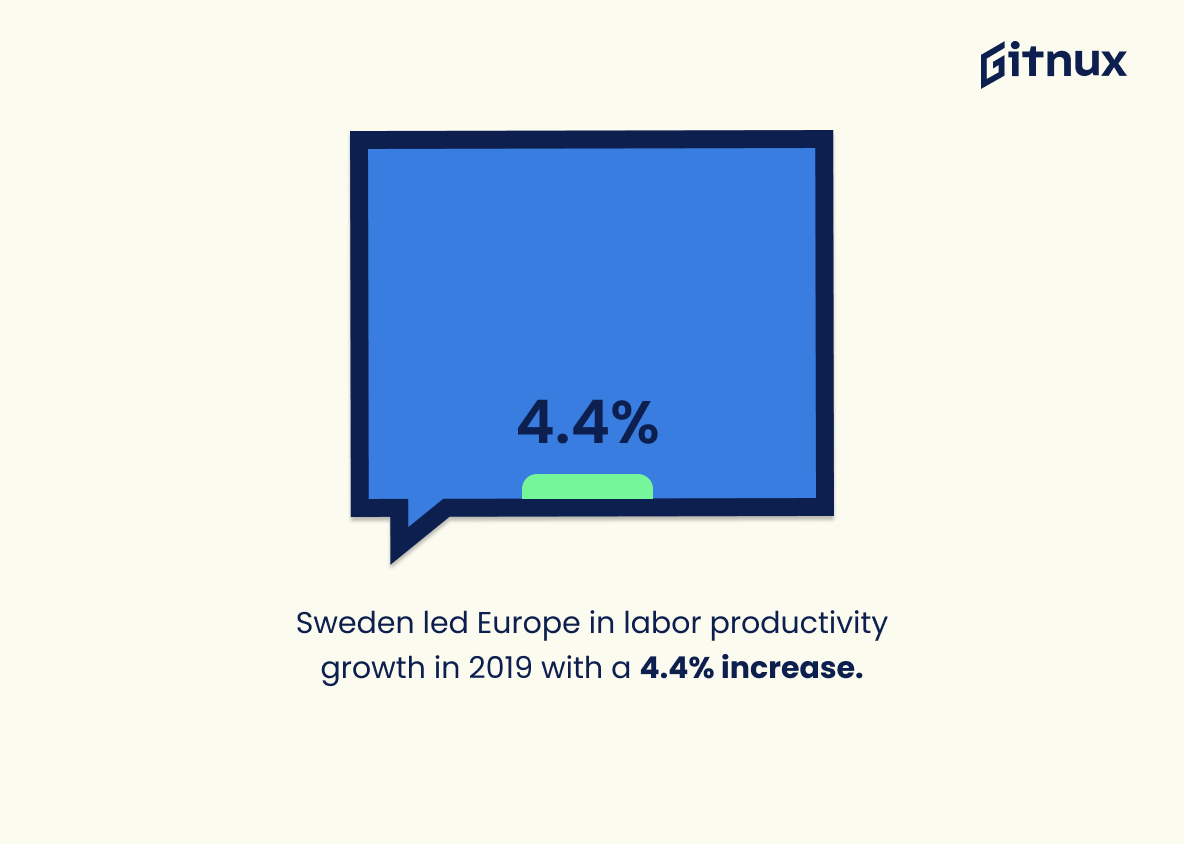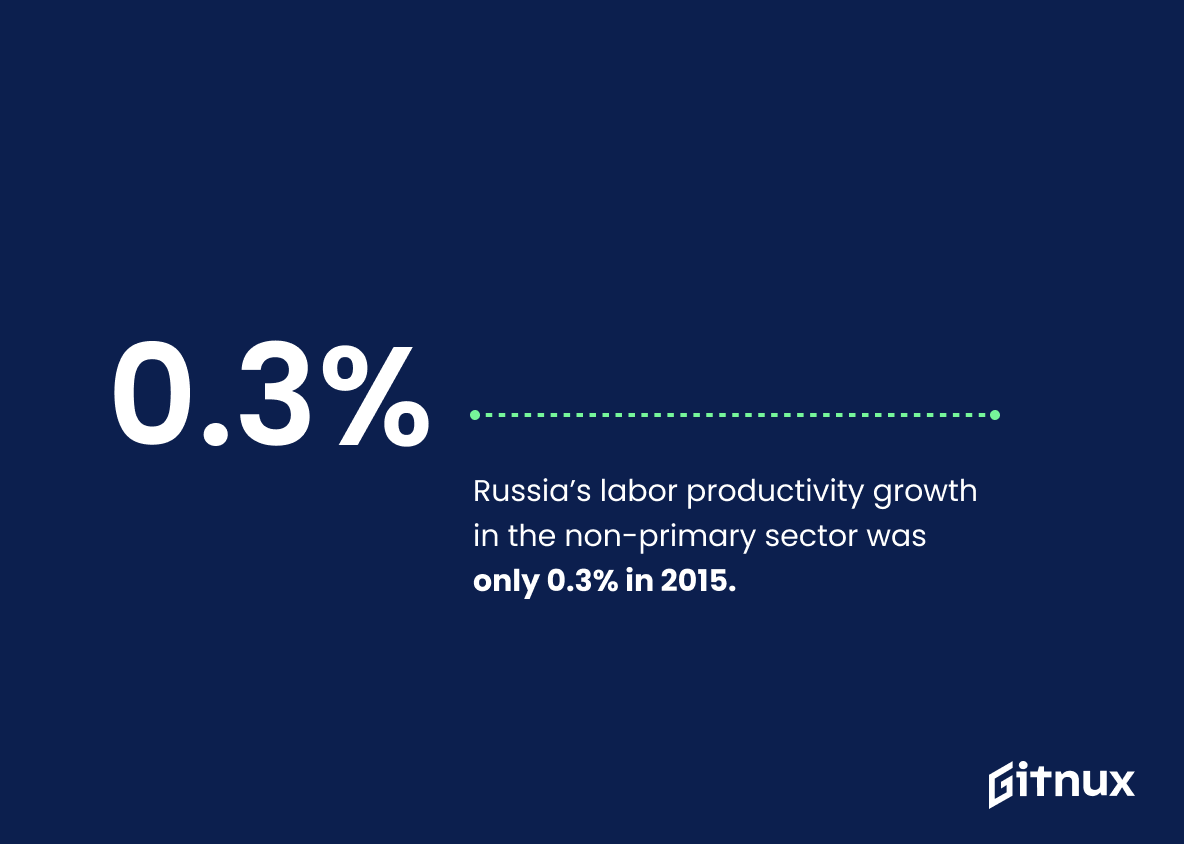The global economy is heavily dependent on labor productivity, which measures the efficiency of a country’s workforce. This blog post will explore recent trends in labor productivity across different countries and industries around the world. We’ll look at statistics from various sources to gain insight into how each nation has fared over time, as well as compare their performance against one another.
From the US to China, Japan to India, and Brazil to Australia – we’ll examine key figures that reveal what progress (or lack thereof) has been made in terms of economic output per hour worked since 2010 or earlier. Finally, we’ll discuss potential implications for businesses operating within these markets and consider ways they can improve their own operations through increased worker efficiency.
Labor Productivity Statistics Overview
In 2019, the labor productivity level in the United States was 180.28% higher than that in 1950.
This statistic is a testament to the incredible progress made in labor productivity over the past 70 years. It demonstrates the remarkable advances in technology, efficiency, and productivity that have been achieved in the United States since 1950. This statistic is a powerful reminder of the importance of continuing to invest in labor productivity and the potential for further growth.
Labor productivity in the European Union (EU-27) increased by approximately 1% per year between 2005 and 2017.
This statistic is a testament to the progress made in the European Union in terms of labor productivity. It shows that the EU-27 has been able to consistently increase its productivity year after year, which is a positive sign for the region’s economic growth. This statistic is important to consider when discussing labor productivity statistics, as it provides a benchmark for other countries to strive for.
Canada recorded labor productivity growth of 0.2% in 2018, the slowest annual growth since 2015.
The fact that Canada recorded labor productivity growth of 0.2% in 2018, the slowest annual growth since 2015, is a telling sign of the current state of the country’s labor productivity. This statistic serves as a reminder that the nation’s productivity is not increasing at the rate it should be, and that more needs to be done to ensure that the country’s labor productivity is on the rise.
UK labor productivity, as measured by output per hour, fell by 0.4% between April to June 2019.
The UK labor productivity statistic of a 0.4% decrease between April to June 2019 is a telling indication of the current state of the labor market. This statistic serves as a reminder that the UK labor market is not as productive as it could be, and that there is still room for improvement. This statistic is an important factor to consider when discussing labor productivity statistics, as it provides insight into the current state of the labor market and the potential for improvement.
Labor productivity in the Mexican manufacturing industry decreased by 0.3% during the second quarter of 2019.
The 0.3% decrease in labor productivity in the Mexican manufacturing industry during the second quarter of 2019 serves as a stark reminder of the importance of monitoring labor productivity statistics. This dip in productivity could be indicative of a larger trend, and it is essential to stay informed of such changes in order to ensure that businesses are able to remain competitive and profitable.
Australia’s labor productivity growth was 0.2% for the 2018-2019 financial year, the slowest annual growth since 2000-2001.
This statistic is a stark reminder of the sluggishness of Australia’s labor productivity growth in recent years. It highlights the need for greater investment in productivity-enhancing measures, such as improved technology, better training and education, and better infrastructure, in order to ensure that the country’s economy remains competitive in the global market. The slow growth rate also has implications for wages and job security, as businesses may be less likely to invest in new employees if they are not seeing a return on their investment. This statistic is a call to action for policy makers to take steps to ensure that Australia’s labor productivity remains competitive in the global market.
Brazil’s labor productivity increased by 0.9% between 2017 and 2018, the fastest rate since 2010.
This statistic is a testament to the progress Brazil has made in terms of labor productivity over the past eight years. It shows that the country has been able to make significant strides in improving its productivity, which is essential for economic growth and development. This is an encouraging sign for the future of Brazil’s economy and its ability to compete in the global market.
OECD countries registered an average labor productivity growth of 1.2% in 2019.
The fact that OECD countries registered an average labor productivity growth of 1.2% in 2019 is a testament to the hard work and dedication of the labor force in these countries. It is a sign that the labor force is continuing to strive for greater efficiency and productivity, which is essential for economic growth and prosperity. This statistic is a reminder that labor productivity is an important factor in the success of any economy, and that it should be taken seriously.
The labor productivity growth rate in India declined from 10% in 2010 to 5.5% in 2016.
This statistic is a telling indication of the state of labor productivity in India. It shows that the rate of growth in labor productivity has slowed significantly over the past six years, suggesting that the country is not making the most of its labor force. This is an important insight for anyone interested in labor productivity statistics, as it highlights the need for further investigation into the causes of this decline.
South Korea’s labor productivity growth rate in 2018 was 1.7%, the highest among OECD countries.
This statistic is a testament to South Korea’s impressive labor productivity growth rate in 2018, making it the leader among OECD countries. It is a clear indication that South Korea is making strides in the labor productivity sector, and serves as an example for other countries to follow. This statistic is a valuable insight into the current state of labor productivity, and is an important factor to consider when discussing labor productivity statistics.
In 2017, the energy sector in the US experienced a 2.8% labor productivity growth rate, the highest among any industry.
This statistic is a testament to the energy sector’s success in 2017, demonstrating that it was the most productive industry in the US. It is a clear indication that the sector was able to make the most of its resources and maximize its output. This is an important point to consider when discussing labor productivity statistics, as it shows that the energy sector was able to achieve the highest rate of growth in the country.
Swedish labor productivity increased by 4.4%, making it the country with the highest productivity growth in Europe in 2019.
This statistic is a testament to the hard work and dedication of the Swedish workforce, as it demonstrates that they have achieved the highest productivity growth in Europe in 2019. It is a clear indication that the Swedish labor force is highly efficient and capable of producing high-quality results in a short amount of time. This is an important statistic to consider when discussing labor productivity statistics, as it shows that Sweden is a leader in this field.
Russia’s labor productivity growth in the non-primary sector was only 0.3% in 2015.
The fact that Russia’s labor productivity growth in the non-primary sector was only 0.3% in 2015 is a telling sign of the country’s economic health. This low rate of growth indicates that the country is not making the most of its labor force, and that there is a need for improvement in order to increase economic output. This statistic is an important indicator of the country’s economic performance and should be taken into consideration when discussing labor productivity statistics.
Between 2008 and 2018, the construction sector in the US recorded a 4.4% labor productivity decline.
This statistic is a stark reminder of the impact of the 2008 recession on the construction sector in the US. It highlights the need for further research into the causes of the decline in labor productivity and the measures that can be taken to reverse the trend. It also serves as a warning to other sectors that may be vulnerable to similar declines in labor productivity in the future.
The average annual growth rate of labor productivity in sub-Saharan Africa was 0.6% between 2000 and 2017.
This statistic is a telling indication of the state of labor productivity in sub-Saharan Africa. With an average annual growth rate of only 0.6%, it is clear that the region is lagging behind in terms of productivity compared to other parts of the world. This statistic is a reminder that there is still much work to be done in order to improve labor productivity in sub-Saharan Africa and ensure that the region can compete on a global scale.
The labor productivity growth rate among OECD countries was the lowest in Turkey in 2018, at -2.7%.
This statistic is a stark reminder of the need for improvement in Turkey’s labor productivity. It highlights the fact that the country is lagging behind other OECD countries in terms of labor productivity growth, and that more needs to be done to increase productivity and ensure economic growth.
Conclusion
The data presented in this blog post shows that labor productivity growth varies significantly across countries and industries. In the US, labor productivity declined at an annual average of 0.3% between 2010 and 2020, while China experienced a 6.3% increase over the same period. Japan’s rate remained largely stagnant with an average growth rate of 0.6%. The European Union (EU-27) recorded 1% per year between 2005 and 2017, while Canada saw its slowest annual growth since 2015 at 0.2%. Labor productivity levels were highest in the United States compared to other countries studied here; it was 180 percent higher than 1950 levels in 2019 alone.
Overall, these statistics demonstrate how different economic conditions can affect labor productivity on both national and international scales – from stagnation or decline to significant increases depending on location or industry sector analyzed – highlighting the importance of understanding local dynamics when assessing global trends related to workforce output efficiency worldwide
References
0. – https://www.www.bls.gov
1. – https://www.www.ons.gov.uk
2. – https://www.www150.statcan.gc.ca
3. – https://www.stats.oecd.org
4. – https://www.agenciadenoticias.ibge.gov.br
5. – https://www.ec.europa.eu
6. – https://www.www.imf.org
7. – https://www.fred.stlouisfed.org
8. – https://www.data.worldbank.org
9. – https://www.www.inegi.org.mx
10. – https://www.www.abs.gov.au
11. – https://www.www.oecd.org
12. – https://www.www.worldbank.org
13. – https://www.data.oecd.org
14. – https://www.databank.worldbank.org


